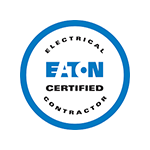A portable generator can be a good temporary power supply for lighting, vital medical equipment, refrigerators, sump pumps and essential appliances. Following is a partial list of tips from DTE Energy for safely installing and operating a portable generator. (For complete list, visit the DTE Energy website.)
Follow the manufacturer’s instructions to avoid injuring someone or damaging your generator or appliances.
When you use a portable generator, you can only operate a limited number of appliances and lights. Determine what items you need to operate and add up that wattage. That total is your “constant wattage” – the energy you will constantly need to keep the selected items running.
Determine the “start-up wattage.” Motor-driven appliances, such as refrigerators, freezers, air conditioners and furnace blowers require up to three times their normal wattage to start or to periodically cycle a compressor. Choose a generator that meets or exceeds your “constant wattage” needs and that also has a surge rating that meets or exceeds your “start-up wattage” needs.
Make sure the generator’s voltage rating matches the voltage ratings of the items you want to operate. Portable generators may be rated for 120 volts only or a combination of 120 and 240 volts. Most household appliances are rated at 120 volts. Some larger electric appliances, such as ranges, dryers and well pumps, are rated at 240 volts. These appliances cannot be operated on a 120-volt generator.
Have a qualified electrician properly size and install your generator or have a local electrical inspector check the installation for compliance with safety codes if you install the generator yourself. A permit may be required for installation.
Take precautions to prevent potentially dangerous “backfeed.” Backfeed occurs when an improperly connected generator begins feeding electricity back into the power lines. Recommended methods for preventing backfeed include installing a transfer switch or using a direct hookup.
Maintain adequate ventilation. Generators emit carbon monoxide. Never operate a generator in your home, garage or other enclosed building. Place it in a dry, outside location.
Water conducts electricity. Avoid dangerous electric shocks. Make sure that your hands are dry and you’re standing in a dry place whenever you operate the generator.
Protect your appliances. Turn off or disconnect all appliances and lights before you begin operating the portable generator. Once the generator is running, turn your appliances and lights on one at a time to avoid overloading the unit.
If you are considering backup generation for your home or business, the professionals at Oak Electric Service are happy to answer your product and installation questions. We invite you to visit our website at www.oakelectric.com to learn more about us; or give us a call at (248) 206-5980 for a free consultation.





















